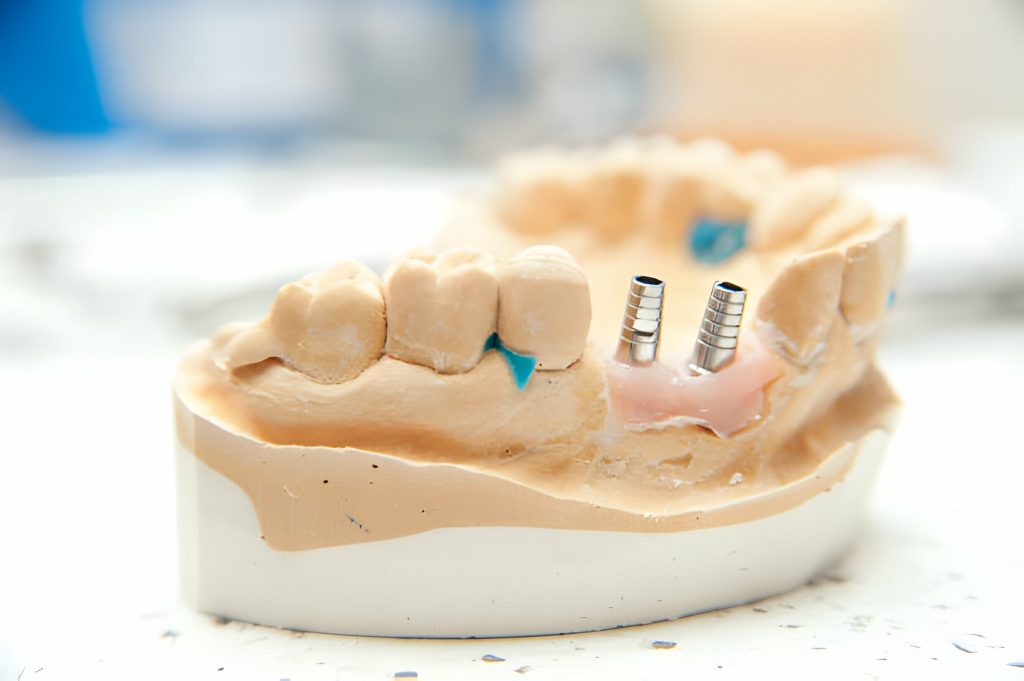
How to Get Dental Implants Covered by Insurance: A Comprehensive Guide!”
Introduction
Embarking on the path to dental wellness through the transformative journey of obtaining dental implants is both exciting and significant. For individuals seeking a permanent and natural solution to missing teeth, dental implants stand as a beacon of hope. However, the financial aspect can be a daunting consideration. In this article, we unravel the complexities of how to get dental implants covered by insurance, offering insights into the procedure, associated costs, and alternative savings avenues. This guide empowers individuals to make informed decisions about their oral health, ensuring that the road to dental implants is not only seamless but also financially manageable.v
Understanding the Dental Implant Procedure
The Growing Popularity of Dental Implants
As the demand for dental implants surges, individuals are increasingly curious about how to get dental implants covered by insurance. This transformative dental solution, celebrated for its natural aesthetics and durability, has become immensely popular. With an estimated 3 million Americans already benefitting from dental implants and projections indicating a continual rise, understanding insurance coverage becomes paramount. Navigating the intricacies of insurance policies is essential for those considering this procedure. This article delves into the growing popularity of dental implants while shedding light on the crucial aspect of securing insurance coverage, and ensuring individuals make informed decisions for their oral health and financial well-being.
Variations in the Dental Implant Procedure
Understanding how to get dental implants covered by insurance involves recognizing the variations in the dental implant procedure. This transformative process is not one-size-fits-all, ranging from single implants to more complex procedures. As individuals explore their options, comprehending these variations becomes pivotal. Insurance coverage hinges on these nuances, with policies differing on which aspects of the procedure they support. Whether it’s a single implant or a more intricate scenario, deciphering the specific coverage for extraction, grafting, and the implant itself is crucial. This article delves into these variations, empowering individuals to navigate the complexities and make informed decisions about their oral health and financial planning.
Costs Associated with Dental Implants

Breaking Down the Expenses
Breaking down the expenses associated with dental implants is a crucial step for individuals contemplating this transformative dental procedure and aiming to understand how to get dental implants covered by insurance. The American Dental Association estimates the cost of dental implants to be between $1,600 to $2,200 per tooth, with additional factors like restoration and sedation potentially escalating the overall expenditure. Beyond the basic implant cost, considerations such as consultations, X-rays, anesthesia, and the type of crown play pivotal roles in the financial landscape. As individuals navigate the complexities of insurance coverage, having a detailed comprehension of these expenses empowers them to plan their budgets effectively. This breakdown ensures that the financial commitment to dental implants is transparent, allowing individuals to explore insurance options that align with their needs and contribute to the attainment of optimal oral health.
Factors Influencing Costs
Various factors contribute to the costs associated with dental implants, influencing the overall financial investment for individuals seeking this transformative dental procedure. Beyond the fundamental expense of the implant itself, considerations such as consultations, X-rays, anesthesia, and the type of crown significantly impact the final cost. Consultations and diagnostic procedures, including X-rays, play a vital role in assessing the feasibility and planning of the implant. Anesthesia, whether local or general, adds another dimension to the costs, ensuring a comfortable and pain-free experience during the procedure. Additionally, the choice of crown material and type contributes to the overall aesthetic and functional outcome, further influencing financial commitment. Understanding these factors is paramount as individuals explore how to get dental implants covered by insurance, allowing for informed decisions that align with both their oral health goals and financial capabilities.
Does Dental Insurance Cover Implants?

Varied Coverage Among Dental Insurance Plans
Navigating the landscape of dental insurance plans reveals a diverse array of coverage options, highlighting the intricacies that individuals face when considering how to get dental implants covered by insurance. The extent of coverage varies significantly among different dental insurance plans, leaving individuals with a nuanced understanding of their policy’s provisions. While some plans may cover certain aspects of the dental implant procedure, others may not extend their coverage to the full spectrum of expenses involved. This variability can encompass factors such as extraction, grafting, the implant itself, and the subsequent crown placement. As individuals embark on their dental implant journey, comprehending the divergent coverage options becomes imperative, empowering them to make well-informed decisions that align with both their oral health needs and financial considerations.
Coverage Conditions and Limitations
Delving into the realm of coverage conditions and limitations is essential for individuals navigating how to get dental implants covered by insurance. Dental insurance policies come with specific conditions and limitations that influence the extent of coverage for the various stages of the dental implant procedure. While some policies may cover initial steps like tooth extraction and grafting, they may only partially support the implant and crown placement. Deductibles often play a role, requiring individuals to meet a certain financial threshold before coverage kicks in. Furthermore, the reason for needing dental implants, whether due to an accident or considered cosmetic, can impact coverage. Understanding these conditions is crucial for individuals to decipher the intricacies of their insurance policies, ensuring they are well-prepared for the financial aspects of obtaining this transformative dental solution.
Navigating Medical Insurance for Dental Implants
Rare Coverage by Health Insurance
Securing coverage for dental implants through health insurance remains a rarity, as these policies typically do not encompass the intricacies of dental procedures. Health insurance rarely includes coverage for dental implants unless deemed “medically necessary,” usually in cases of severe injuries resulting from incidents like car accidents. Even in such exceptional circumstances, finding a dentist willing to accept health insurance for dental procedures can pose challenges. The separation of dental and medical insurance realms contributes to this rarity, making it vital for individuals exploring how to get dental implants covered by insurance to be aware of the limitations within their health insurance policies. While health insurance might offer relief in specific medical contexts, the specialized nature of dental implants often necessitates alternative financial avenues for those considering this transformative dental solution.

Exceptional Cases Covered by Medicare
Medicare, the federal health insurance program primarily designed for individuals aged 65 and older, may provide coverage for dental implants in exceptional cases deemed “medically necessary.” Instances where a severe injury, such as those resulting from a car accident, has caused significant damage to the mouth might warrant Medicare coverage for dental implants. However, despite this potential avenue, finding a dentist willing to accept Medicare plans for dental procedures can be challenging.
The intersection of health insurance and dental care remains limited, and individuals considering dental implants must carefully assess their eligibility and options. While Medicare may offer assistance in specific situations, the specialized nature of dental implants often requires individuals to explore alternative financial avenues to ensure comprehensive coverage for this transformative dental solution.
Utilizing FSA or HSA Funds for Dental Implants
Flexible Spending Account (FSA) Guidelines
Utilizing a Flexible Spending Account (FSA) for dental implant costs follows specific guidelines. If you have an FSA through your employer, these funds can be applied to cover various out-of-pocket healthcare expenses, including dental procedures. However, strict regulations often require you to provide receipts for the implant and a letter of medical necessity signed by a healthcare professional. Navigating FSA guidelines ensures a smoother process for those seeking financial assistance for their dental implant procedure, allowing them to maximize the benefits of this tax-advantaged savings account.
Health Savings Account (HSA) Considerations
Health Savings Accounts (HSAs) offer a tax-advantaged option for covering dental implant costs. If you possess an HSA, the funds within it can be utilized for dental procedures, including implants, provided they are not solely for cosmetic reasons. Notably, a medical diagnosis may be necessary for HSA approval. HSAs can be acquired through employers or independently with a high-deductible health plan. Understanding these considerations ensures individuals can leverage their HSA effectively, making it a valuable financial tool for those exploring how to get dental implants covered by insurance or alternative means.
Tips for Saving Money on Dental Implants

Maximizing Dental Insurance Benefits
Maximizing dental insurance benefits is a strategic approach to alleviate the costs associated with dental implants. To optimize coverage, individuals should thoroughly understand their insurance policies, exploring which aspects of the implant procedure are supported. It’s crucial to engage in open communication with the dental provider, ensuring all available benefits are utilized. Additionally, exploring alternative savings options within the insurance plan, such as discounts and savings plans, can further enhance financial assistance. By proactively navigating their dental insurance, individuals can maximize benefits, making the path to obtaining dental implants more financially viable and accessible.
Exploring Dental Savings Plans and Discounts
Exploring dental savings plans and discounts becomes a valuable strategy for individuals concerned about the potentially high costs of dental implants. Dental practices often offer savings plans, providing services at discounted prices. Inquiring about these plans and negotiating potential discounts can significantly alleviate the financial burdens associated with the procedure. This proactive approach empowers individuals to seek alternative avenues for affordability, ensuring that the transformative benefits of dental implants remain accessible. By delving into available savings plans and discounts, individuals can strategically navigate the financial landscape, making dental implants a more feasible and economically sound choice for enhancing their oral health.
Conclusion
In conclusion, the journey to get dental implants covered by insurance involves a nuanced understanding of the dental procedure’s costs, insurance coverage variations, and alternative savings options. Navigating this intricate landscape requires individuals to proactively explore their insurance benefits, maximize available coverage, and consider supplementary savings plans or discounts offered by dental practices. The financial commitment to dental implants can be better managed by breaking down costs, understanding insurance policies, and strategically utilizing available resources. In doing so, individuals can embark on their path to optimal oral health with confidence, knowing they have navigated both the clinical and financial aspects of obtaining this transformative dental solution.
Frequently Asked Questions
Coverage varies; policies may cover specific aspects but not the entire procedure. Checking policy details is essential.
Health insurance rarely covers dental implants unless deemed “medically necessary” due to severe injury.
Both FSAs and HSAs can be utilized, but adherence to rules, including medical necessity, is crucial.
Exploring dental savings plans and negotiating discounts with the dental practice are viable alternatives.
The duration varies, ranging from three to nine months or more for complex cases. Payment plans can be structured accordingly.













Leave a Reply